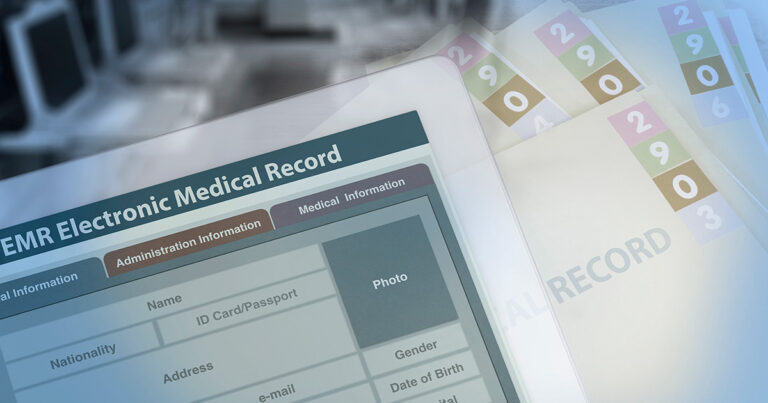Why Every Healthcare Practice Needs a Patient Portal
Managing patient-provider relationships can be tricky. In theory, private healthcare practices offer more than just a service; they offer partnership on a journey to health and wellness. In order to achieve this, many healthcare practices are now turning to a digital solution: The online patient portal.
What is a Patient Portal?
Patient portals address some of the most common challenges that private healthcare practices face, including poor communication, inefficient flow of paperwork and information, and lack of transparency.
Historically, healthcare providers haven’t been super successful at resolving these issues. Instead, they have continued using outdated systems and poor administrative practices, compounding the problems and causing further patient churn. In fact, U.S. healthcare systems were recently found to have a patient churn rate of 48%.
Ultimately, patient portals can help reduce this churn rate, benefiting both patient and provider by generating longer-term relationships. For both parties, patient portals provide a point of communication, accessibility, and clarity. But what are they, exactly?
A patient portal is a hub of information and exchange that can be accessed online by both patient and provider. A patient portal will typically provide the following services:
- A safe and secure channel for exchanging valuable information
- A messaging system, allowing patients and providers to communicate easily and efficiently
- Patient profiling, including a patient’s healthcare history and contact information
Patient portals might also include doctor’s notes, appointment scheduling, test results, patient surveys, and more.
In any case, a patient portal is typically accessed with a username and password to keep all information secure and HIPAA-compliant.
Improve Exchange of Information
One of the greatest administrative problems facing healthcare today is the critical exchange of private healthcare data, including a patient’s personal history, demographics, insurance information, medication usage, test results, and current symptoms.
Historically, this kind of information has been communicated and stored on paper – creating a difficult-to-manage system of records that’s susceptible to error and disorganization. Not only that, but managing paper forms necessitates a costly administrative burden to healthcare practices. In fact, by the end of 2019, healthcare administrative costs are anticipated to reach a total of $500 billion in the U.S. – much of this unnecessary.
A patient portal acts as a solution to expensive and potentially dangerous administrative errors by making the exchange of electronic medical records (EMR) easy and efficient.
Electronic medical records allow all patient information to be entered, stored, and exchanged digitally. Using EMR, practitioners are able to send intake forms across a safe and secure channel to their patients. Patients are then able to fill out the forms without ever entering the office, then send them back to providers. And admin staff are saved from scanning and uploading documents, filing away forms, and managing storage.
Using a patient portal, practitioners can send and receive electronic intake forms to new and existing patients. These might include pre-appointment questionnaires, records release forms, appointment notes, and more.
Not only that, but this entire exchange remains safe, secure, and HIPAA-compliant – saving practices the further headache of worrying about costly legal missteps in ensuring the privacy of patient information.
Provide Clearer Communication
In one survey on general patient satisfaction, 53% of negative comments centered around poor communication.
Patients might complain about communication for any number of reasons, including:
- Feeling “unheard” by their providers;
- Negative experiences with front-of-office staff;
- Scheduling mishaps;
- Miscommunication regarding insurance or payment;
- Difficulty contacting the practice via phone or email;
- Confusion regarding the exchange of critical paperwork.
And unfortunately, even one incident regarding communication can cause a patient to look for another provider, or worse – write a poor review of a practice on Yelp or RateMDs.
To avoid patient churn and reputation damage, private healthcare practices will want to take steps to ensure clear, smooth communication between patients, staff, and providers.
Here’s how a patient portal can help:
Direct Messaging for Easy, Efficient Patient-Provider Contact
One common frustration among patients is the lack of accessibility to providers when patients are out-of-office. And with some appointments running only 20-30 minutes – and scheduled weeks or months apart – patients don’t typically have the ability to sufficiently connect with their healthcare providers.
Using a portal, patients are able to directly message their providers with questions or concerns between appointments. For example, if a patient has a question about a specific symptom or care recommendation, they can log into their portal and send a quick message to their provider.
If possible, providers can then quickly answer patients’ questions directly on the portal. In some cases, providers may also want to use the portal to directly set up a quick phone call with their patient.
A Central Hub with Access to Important Information
One common cause of confusion, scheduling mishaps, and general frustration among patients is not having access to information in a central location. Typically, patients must make phone calls to busy practices run by over-burdened administrative staff in order to ask questions. The result? Long holds on call waiting. Brief, rushed conversations. And unhappy patients that feel undervalued by their practices.
Patient portals act as a single hub of information where patients can view notes from their appointments, scheduling reminders, their own personal data, and more. Instead of making a phone call to ask a simple question or request access to their own data, patients can log into their portal right from the comfort of home.
Mobile Access For Patient Care On the Go
Healthcare is frequently criticized for being “behind the times” in terms of technology. And the criticism isn’t unfounded. A recent study found that healthcare typically falls 10 years behind other industries in adopting new technologies specifically dealing with customer (or patient) engagement.
Patients can check doctor’s notes from their workplaces, and providers can quickly check vital patient information before an appointment begins. Finally, mobile-optimized care communicates that a practice is invested in new technology…and in providing patients a quality, up-to-date healthcare experience.
Increase Patient Satisfaction and Retention
By providing a clear, efficient channel for information exchange and communication, online portals will ultimately increase both patient satisfaction and retention. Incidents caused by poor communication or administrative mishaps are reduced, and patients feel more connected to their providers.
Providers also benefit from the usage of patient portals. Portals reduce administrative burden (and the costs of paying admin staff), and bring together information in a single access point that is safe and secure.
One of the most significant benefits of a patient portal to a private practice is that it acts as a hub for electronic intake forms. Using electronic forms, practices are able to gather vital information about a patient before an appointment, send and exchange data, and store information with cloud-based technology.
Free Download: Staying Connected: A Guide to Messaging Your Patients When They’re OOO.
IntakeQ: An Optimal Patient Portal Solution
IntakeQ is an electronic intake forms platform that also allows private healthcare practices to create a personally branded patient portal for their clients.
Using IntakeQ’s online portal, patients can exchange files and documents, securely message their providers, access forms and notes, and more. It’s a single-solution hub to make the healthcare experience clearer and more efficient – helping to develop fruitful, long-term relationships that result in successful outcomes for everyone.







